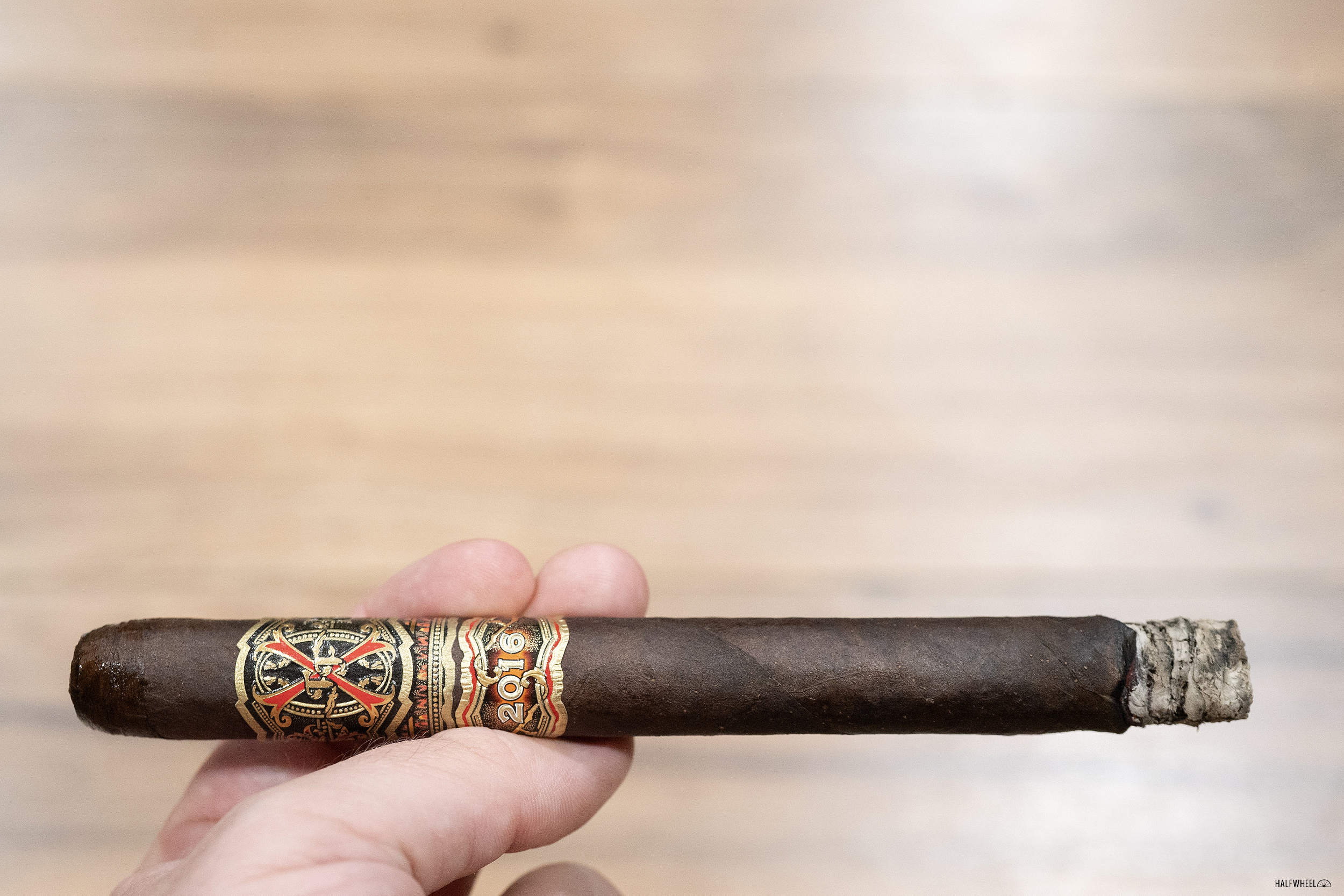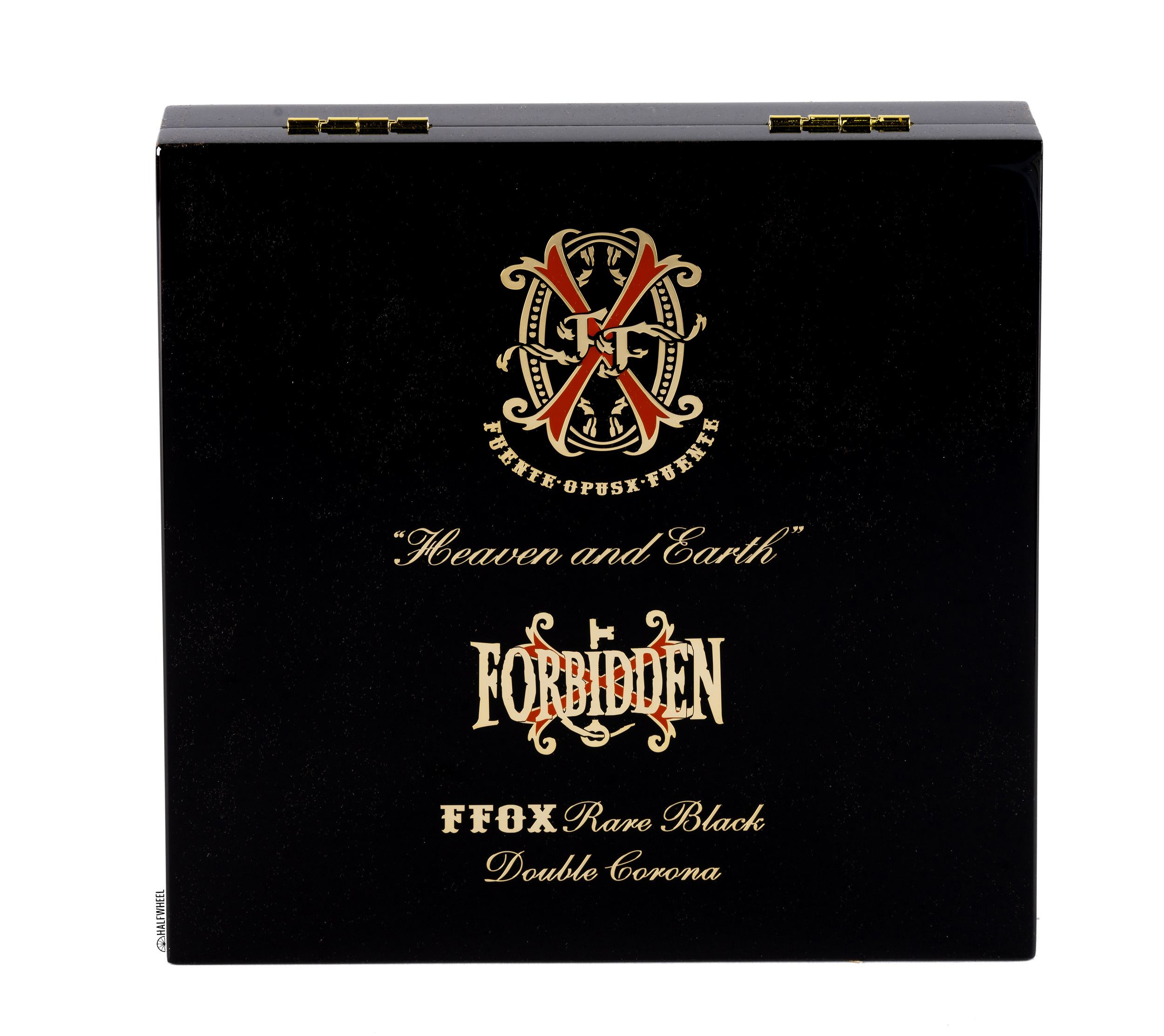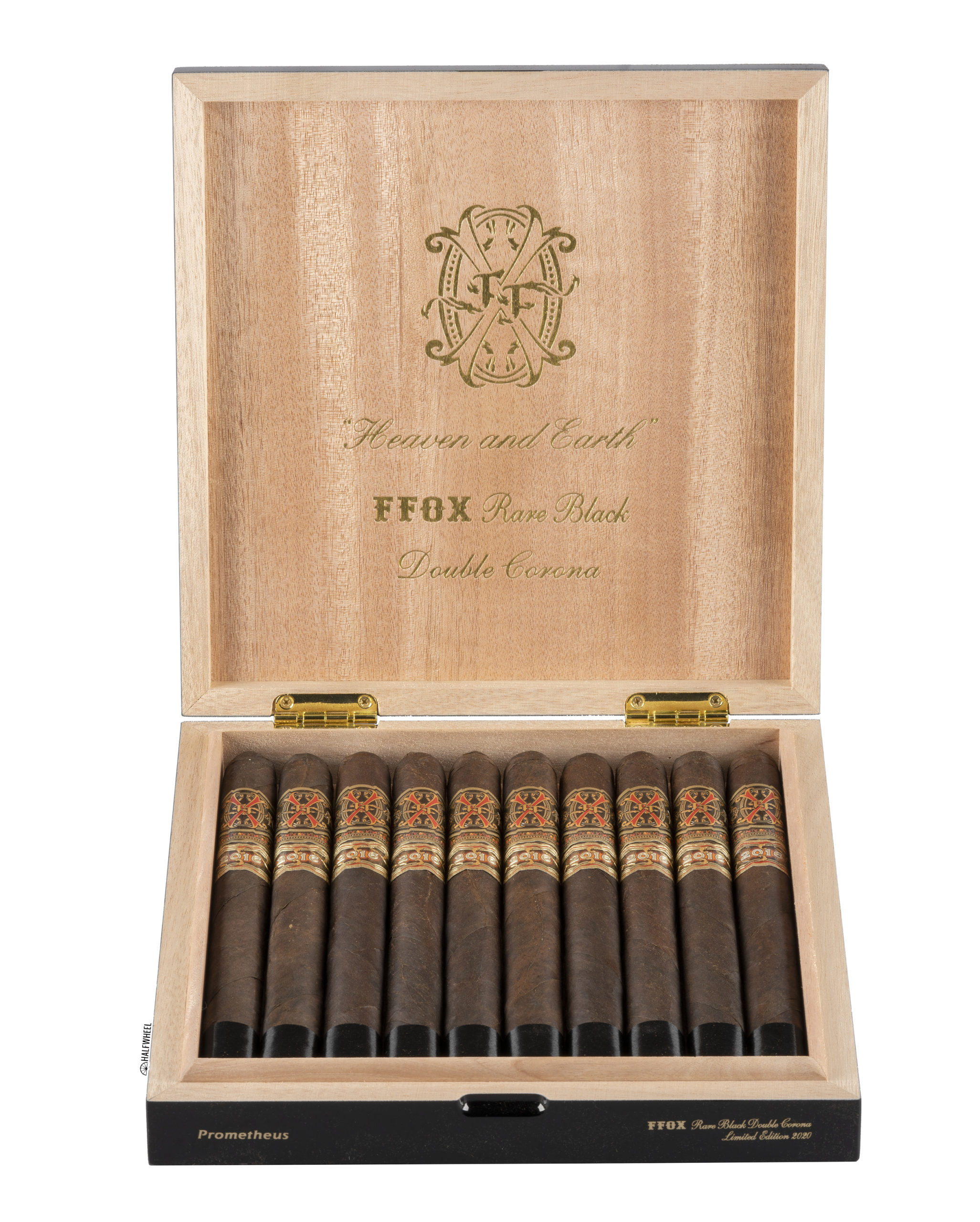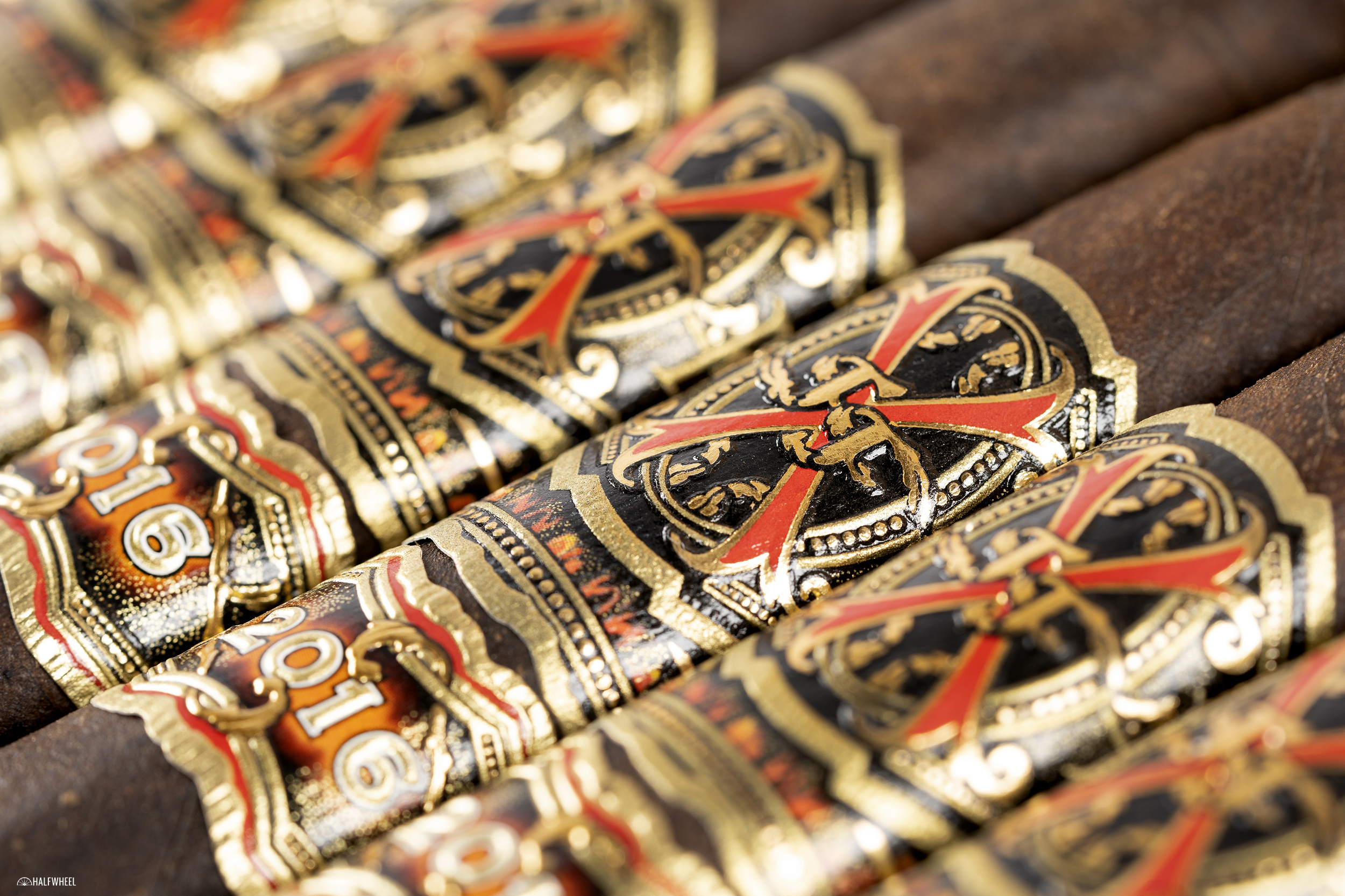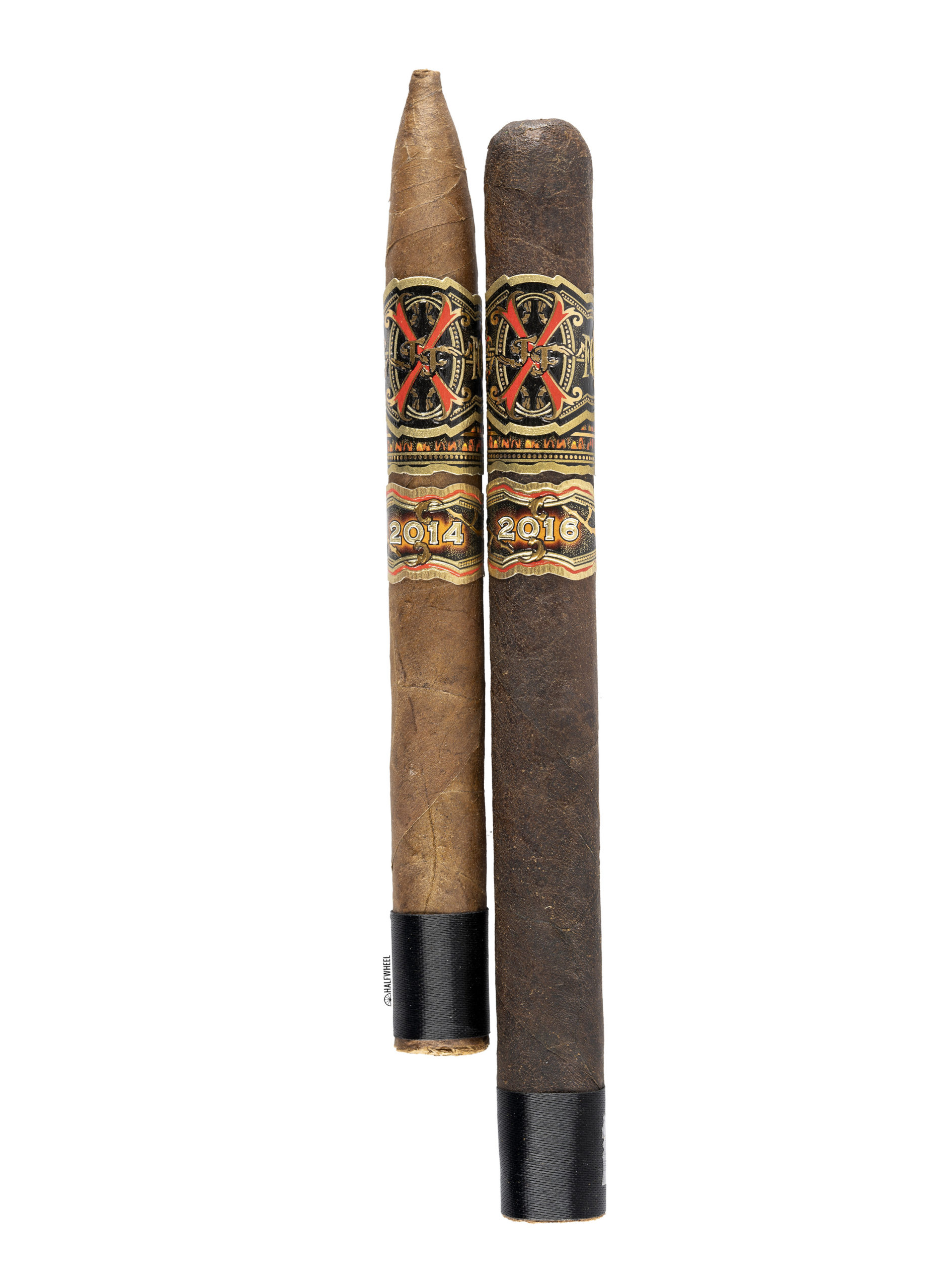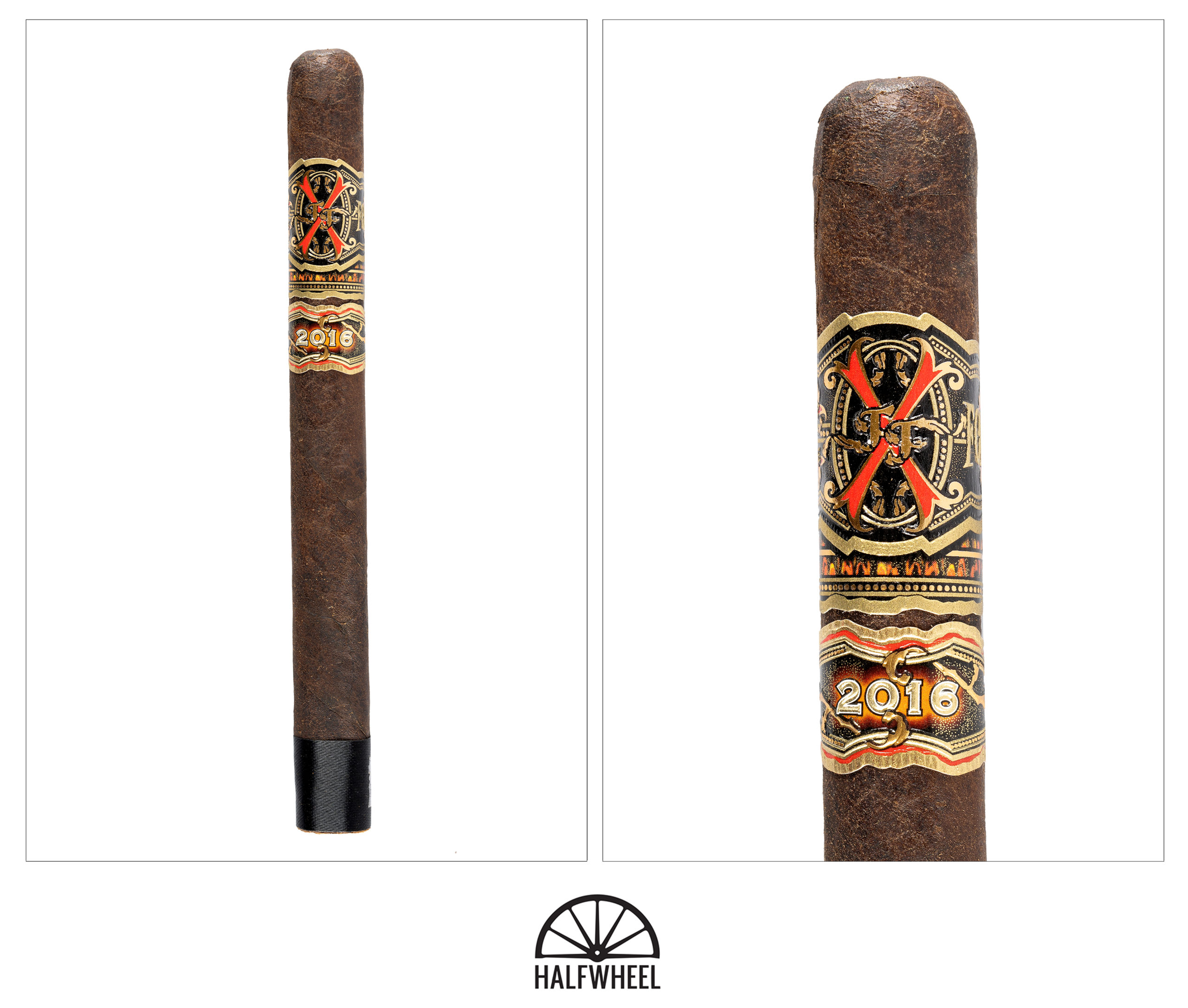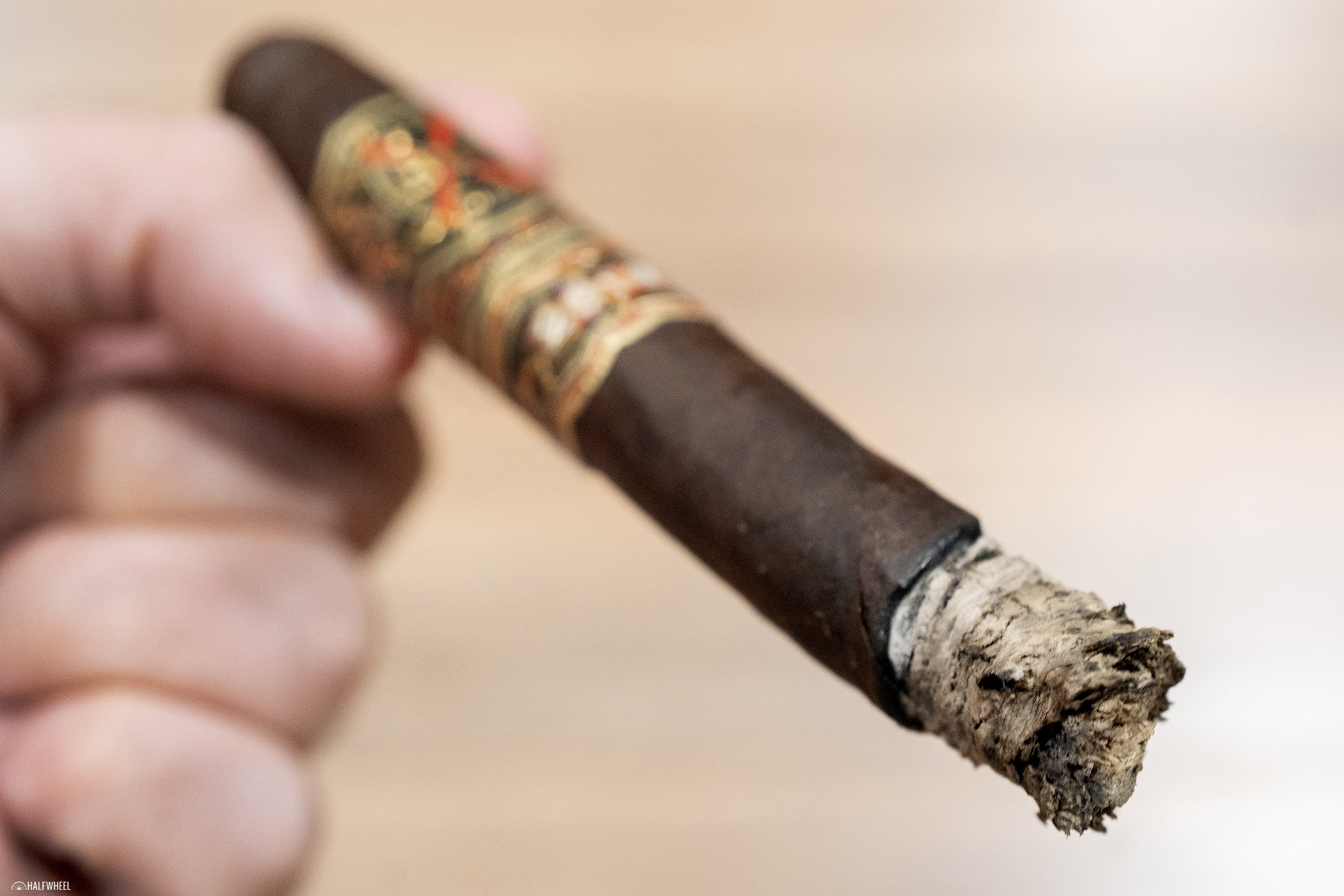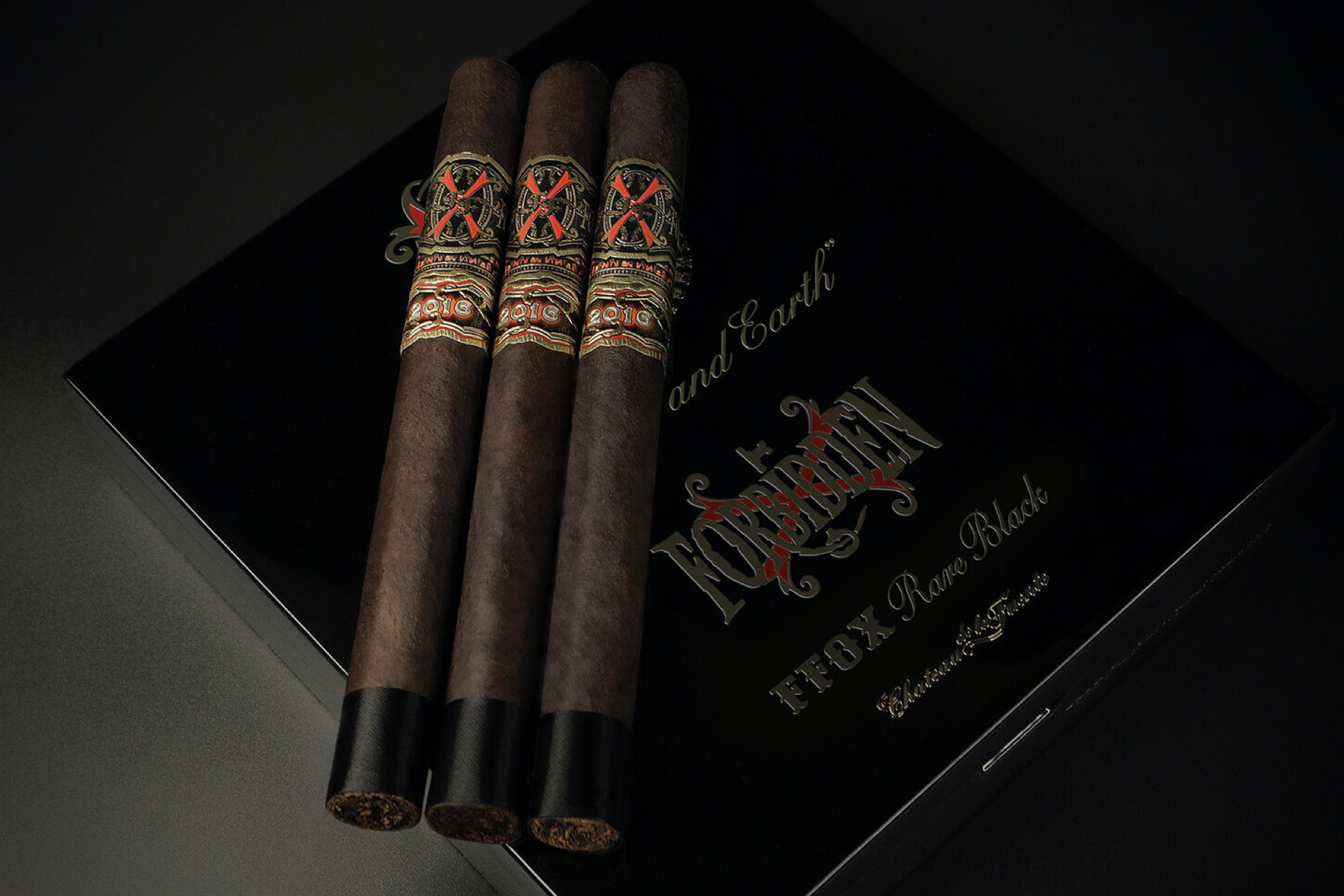When I was getting into cigar smoking, the name OpusX was seemingly one of, it not the holy grails of the regular cigar smoker. It showed up sporadically throughout the year, it was often limited to per day purchase limits of one or two cigars, and it carried with a premium price tag that while not out of reach, certainly gave a good number of people a bit of pause before pulling out their wallets.
Fast forward more than a decade later, and I have been fortunate to both smoke and accumulate a good number of OpusX cigars, which have branched out to include a number of offshoot lines such as Angel’s Share, the 20 Years Celebration, Forbidden X 13, Rosado Oscuro Oro and more.
But there is one branch of the OpusX family tree that has always caught my attention, the cigars that bear the OpusX band but are made for Prometheus, the company that is likely better known for its collection of cigar cutters, lighters and humidors, many of which feature Fuente-themed branding.
These releases, which are technically under the umbrella of Prometheus’ sister company, God of Fire, Inc., are part of a collection known as the Fuente Aged Selection. They almost often come in fairly elaborate and decorated humidor-style boxes, some smaller and billed as travel humidors, while others come in full-sized tabletop humidors.
One of the more recent series to come out is one called Heaven and Earth, which includes a line called Rare Black and which come wearing bands with black backgrounds and a generous use of red and gold, including the familiar red X that graces all OpusX releases. The cigars also wear a secondary band that indicates the year in which it was rolled, which in this case is 2016.
The Heaven and Earth series debuted in 2017, while Rare Black was added in 2019 with a cigar that measured 6 7/8 x 44 and came in a unique vitola that features an open torpedo style head, almost resembling a ballpoint pen were it to be held upside down.
In 2020, a double corona was added as the second vitola, though it wouldn’t begin shipping until April 2021.
As with pretty much all of the Fuente Aged Selection releases, the Fuente Fuente OpusX Heaven and Earth Rare Black Double Corona is quite limited, with only 1,500 cigars released in the spring of 2021, and another 1,500 slated for the fall. Keith Park didn’t comment when asked whether there might be more cigars released in the future, as was done with Fuente Fuente OpusX Heaven and Earth Rare Black Torpedo, a 2019 debut that has returned in subsequent years.
- Fuente Fuente OpusX Serie “Heaven and Earth” Rare Black Torpedo (6 7/8 x 44)
- Fuente Fuente OpusX Serie “Heaven and Earth” Rare Black Double Corona (7 5/8 x 49)
It is also not a cheap cigar, carrying an MSRP of $65, making it the more expensive of the two sizes, as the Torpedo is priced at $49.90. The company has not disclosed the blends of either of the two cigars.
- Cigar Reviewed: Fuente Fuente OpusX Heaven and Earth Rare Black Double Corona
- Country of Origin: Dominican Republic
- Factory: Tabacalera A. Fuente y Cia
- Wrapper: Undisclosed
- Binder: Undisclosed
- Filler: Undisclosed
- Length: 7 5/8 Inches
- Ring Gauge: 49
- Vitola: Double Corona
- MSRP: $65 (Box of 10, $650)
- Release Date: March 2021
- Number of Cigars Released: 300 Boxes of 10 Cigars (3,000 Total Cigars)
- Number of Cigars Smoked For Review: 3
The Fuente Fuente OpusX Heaven and Earth Rare Black Double Corona sports an incredibly dark wrapper—a rich, earthy, almost tree bark shade of brown that is generally very even from head to foot, save for a few pin-sized dots of lighter brown. There is some variance in the terms of tooth and oils that the cigar offers, but the one sample that offers the most makes the visual all that more appealing. The cigar appears to have a bit of a press to it, as it’s easy to see some ridges on the sides of the cigar as it faces me, and the foot reveals some squaring off as well. The cigar is firm when gently squeezed, though I’m certainly not going to risk damaging the wrapper by being too hands-on with it. The foot has a bit of a smoky aroma at first sniff, a bit like being downwind of a freshly lit fire. After that, there is some mixed berry sweetness, followed by pepper and some thick bread dough. The cold draw on the first sample is surprisingly firm, enough that I’m concerned about how this will smoke. The second cigar shows the effects of the length of the cigar a bit more, but it doesn’t feel like there is any obstruction to the airflow, while the third is the best of the bunch, offering very smooth air movement. There is some flavor but nothing is particularly distinct: there is a generic tobacco note and its related pepper and lip-tingling sensation, then a bit of damp soil and damp bark, but both are quite restrained in their intensity.
I’m relieved to discover that once the first cigar is lit, the draw isn’t problematic. It is still a bit firmer than I would like, but a good decent amount of smoke and some good flavors make up for it. The first word that comes to mind about the flavor is robust, though the more I think about it, it’s not quite accurate. There is some earthiness, some pepper that works the front of the tongue and lips, as well as a bit of sappy sweetness that comes along at the tail end of each puff. It’s much more nuanced and detailed than I Initially gave it credit for, particularly due to the sweetness that while a small part of the equation, finds a way to shine. The third sample—the one that was dry boxed a bit—is a few ticks lighter in flavor and body, offering a creamier and somewhat more refined profile that seems to be a better reflection of the age. One sample gives me the twinge of tar just about the time it’s time to knock the first clump of ash off, and when I inspect the head, I find some of the brown, gooey substance, which requires me to snip off a bit more of the head of the cigar. Once clipped, the flavor issue is instantly rectified, and I’m back into a light, somewhat rocky earth flavor with a mix of both white and black pepper. Retrohales establish themselves early as standouts, delivering a bright hit of white pepper that is near perfectly measured in intensity. The final puffs of this section bring on an interesting brightness to both the flavor and aroma, the latter reminding me a bit of the a box of powdered laundry soap, though none of that transfers to the flavor. Rather, it starts to pick up a bit of candy mint, sort of like Eclipse or Ice Breaker mints. The draw on the first cigar is still a bit firm but it isn’t overly problematic, the second is better, and the third—which received some dry boxing, is the best of the bunch. Construction is otherwise quite good. Flavor and body are both in the medium-plus to medium full range, while strength is medium-minus.
The minty flavor at the end of the second third proves to be not only the bridge to the second third but also what becomes the most standout flavor at the start of this section. It’s far from overpowering or singular, but it does shine a new light on rich, robust earthiness. Pepper has settled into a supporting role for the moment, still present but not driving the profile as much as it had earlier. It’s a change that is also noticeable due to a bit of creaminess coming into the smoke, something affecting the texture more than the flavor, but there is an appreciable change. I’m quite amazed by how the third cigar—the one that received some dry boxing—shows this change even better, making the flavors just a touch brighter and crisper, like the final turn to get a guitar string in tune. Just ahead of the midpoint, the retrohales picks up a very bright white pepper that is backed by a bit of the candy mint from earlier. It’s a nostril filler in the sense of hitting all of the nerves, but it’s far from overpowering in terms of intensity or strength. It’s easily the highpoint of the cigar, and I have to think that if you’re not retrohaling through this section, you’re missing half if not more of what the cigar has to offer. Those retrohales progress towards black pepper with the mint hanging on the very tail end of each retrohale, though the overall profile is much more assertive, earthy and what I think people would expect from an OpusX. After the retrohales go through their changes, it’s the flavor’s turn, and it’s not as beneficial of a change. There is a moment in the first cigar where I’m concerned about getting a bit of tar at the head, though I don’t find any when I look and wipe the head with my finger. There’s now more chalk in the profile with a slight metallic edge to it, while the retrohales are sharper in the nostrils than they were just a few moments ago. Combustion issues become a bit more recurrent, though the cigar still draws well, produces plenty of smoke and maintains an even burn line. Flavor and body are now between medium and medium-plus, while strength has ticked up over medium.
The final third starts with a distinctively drier profile than what the cigar offered earlier, with the black pepper the most notable of the components. There is a portion that makes me think of dry wood and Ritz crackers, though I can’t quite place the wood with a more specific descriptor. Meanwhile, retrohales are back to being white pepper dominant, really tingling the nostrils each time I pass smoke through them. The flavor goes through a transition to becoming much more robust, continuing to dry out and picking up a rocky earth note that is just a touch grating on the palate. Depending on the sample—the seemingly damper first and second cigars, in particular—the flavor can get rough enough that I’d question whether or not I’d want to finish it, given how much of the cigar I have smoked already. Fortunately, the Fuente Fuente OpusX Heaven and Earth Rare Black Double Corona rights the ship with about three inches left—mind you this is at about two hours and 50 minutes into the cigar—and the cigar hits another high mark in terms of the flavor, retrohales and aroma coming together. The profile is easily the fullest, richest and most complex it has been, with a thick, chewy smoke led by damp earth and accented by a fairly potent black pepper. There’s a bit of ligero sweetness as well, a flavor that is easy to overlook amidst the uptick in strength but which adds a binding note to everything else. The final inch and a half adds a bit more strength through a pinch more earth and back pepper, as well as some heat, easily pushing the cigar into full flavor and full strength, while body is medium-plus, due largely to a bit less smoke than I would like.
Final Notes
- The double corona has long been one of my favorite vitolas, if not my outright favorite, something I attribute to some well-made and incredibly good Cuban Hoyo de Monterrey Double Coronas.
- Beyond that though, it also blends a sub-50 ring gauge with some added length, making for an extended smoking experience without having to go to a thicker vitola.
- I have long wondered why it seems that when people want more cigar, they want thicker cigars as opposed to longer cigars. I would love to put a double corona up against a gordo to see which developed the better smoking experience in what I would consider to be about the same amount of time.
- There are certainly different dynamics between the two vitolas when it comes to airflow, surface area of the tobacco, blend ratios and so on which lead me to stop short of adamantly declaring that double coronas are superior to gordos.
- One seeming issue of longer cigars is getting the moisture applied during the rolling process out of the final third, which is something I noticed here. All three of the cigars needed a touch-up or two in the second half due to what seemed to be a bit of damper tobacco.
- I was thoroughly impressed by how durable the ash was; even at the points where I thought it would be worth tapping it off and gave it a little bump with my finger, it held on rather tightly.
- It might just be me, but I seem to find that the majority of cigars where I find tar issues tend to be made by Arturo Fuente. That said, they are generally very few and far between.
- Along those lines, I find myself having to cut a bit more of the cap off of Fuente-made cigars to ensure I don’t give any tar a ridge to build up upon.
- When I asked Keith Park of Prometheus about the official dimensions of the cigar, he said they were 7 x 48, though my measurements had it at about 7 5/8 inches long, while the ring gauge felt like a 49, though with the box press it was harder to get a precise measurement. I compared it to a Casa Fuente Double Corona that I happened to have in my humidor, and it appears to be the same size as that cigar, which I’ve seen listed as 7 5/8 x 49.
- A portion of the proceeds from the sales of Fuente Aged Selection products is donated to the Cigar Family Charitable Foundation, which supports a school, medical clinic, and other programs in the Dominican Republic. I’ve had the opportunity to visit the CFCF facility, and it is nothing short of amazing.
- In August 2019, I reviewed another member of the Heaven and Earth collection, the OpusX Purple Rain. That cigar wears the same primary and secondary bands as the Rare Black, but has a purple foot ribbon as opposed to the black one on the Rare Black releases.
- I’m glad to report that I didn’t get much of a nicotine kick from the Fuente Fuente OpusX Heaven and Earth Rare Black Double Corona, as it seemed like it could be a cigar that would leave me with a decent buzz. It’s medium to medium-plus in strength but left no side effects in my experience.
- A double corona is a lot of cigar to smoke, and I will say that the Fuente Fuente OpusX Heaven and Earth Rare Black Double Corona is a particularly time-consuming cigar, especially when smoking by yourself for a review.
- Arturo Fuente advertises on halfwheel.
- The cigars for this review were purchased by halfwheel.
- Final smoking time was three hours and 25 minutes on average.
It's hard not to have high expectations for a cigar like the Fuente Fuente OpusX Heaven and Earth Rare Black Double Corona, whether looking at its pedigree, its limited production, or the thing that most likely stands out: its price. On the whole, the cigar delivers quite well, though it's not without a few spots where it struggles. For the most part, the cigar treats the palate to a dance of both dry and damp earth, white and black pepper, a bit of woods, some creaminess, and the occasional subtle sweetness. The earth and pepper combinations can occasionally lead the profile astray, though thankfully it soon returns to the path it should seemingly be on. Dry boxing also seems to help the cigar a good bit, both in flavor and combustion. It's also worth mentioning that this is a lot of cigar, well over three hours worth by my experience, which at least helps justify the cost but does make this an investment of time as well as dollars. The score will be what it is, the real question is whether you'll find the value and enjoyment that justifies the cost. For me, that came up just a bit short, enough to hold onto some reservations about recommending the cigar wholeheartedly.

